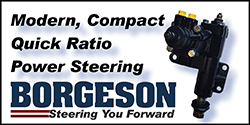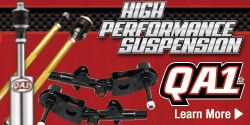Ive searched on here, looked at several You tubes etc. Wasnt sure whether to tie onto one of the old threads or start another. Thought starting another would be easier. Maybe less confusing.
I havent done anything with my motor in a while (74 225 being built to go into 85 D150)
819 Oregon cam
Im gonna copy/paste from another thread here, the specs for this cam
Since I aint great with computer stuff (It would be easier to scan the sheet in instead of copying it manually for sure) here goes...
see if you guys can make sense of things I can't...
Lobe Separation 110 Lobe Center Line Int 106 Exhaust 114
how can lobe centerline and Lobe Separation "not" be the same as each other? 1st thing that doesn't make sense.
Cam lobe Lift .291 on both intake and exhaust.
Duration at 0.002 318 both Intake and Exhaust
at 0.006 289 both
at 0.012 ("0.012" "penciled in") 264 both
at 0.020 248
at 0.026" 240
at 0.050 219
at 0.100 187
at .200 125
Valve Clearance 0.012" both
Checking tappet Dia 0.904" Tappet type Mech Flat
Cam timing @0.050" tappet rise OPEN CLOSE
INTAKE 4* BTDC 36* ABDC
EXHAUST 44* BBDC -5* ATDC
and most of these numbers are nowhere close to what Im seeing.
I've established the 106,* wondering why I ain't seeing the 110* instead.
Also not at the degree wheel numbers I was expecting to see them at.
I have verified the degree wheel TDC position, by both dial indicator and by piston stop. Several times. Its dead nuts.
I have one of those "Proform" dial indicators that slips right into the lifter hole, reads straight off the cam. the body of it could be a little longer, it's not long enough for the whole gauge to protrude above the block deck. The nub on back of it hits the block, when the body is seated in lifter hole. This is with dial indicator pulled out as far as it can be, and still be held by the setscrew in the body.
I have a (I think it's a COMP brand) 0-180-0 degree wheel, piggybacked onto a COMP 1/2" drive crank socket, with the big knurled nut.
I have Cloyes double roller sprockets (rumored to have been old Mopar Performance stock) and a MP double roller chain. Set dot to dot.
I haven't put the head on yet.
seeing the cam open to 0.050 at 62* and 150*. add, divide and I get my 106* which is what the "installed centerline" is supposed to be.
sheet says "CAM TIMING AT 0.050" TAPPET RISE;
at 4* BTDC and close at 36 ABDC, I'm not seeing anywhere near those numbers. this is where Im getting the 62 and 150.
this is where the confusion starts.
And YES I am using the 2nd lifter hole from the front, which is the #1 intake lifter hole to make the measurements.
I want to do this once and do it right, This is where I usually throw my hands up and say "screw it" and continue assembly and hope for the best. But I aint wanting to do that no more.
I think I remember degreeing a 318 once (out of the 5-6 Ive done up over the years) successfully years ago. but wont swear to that either.
I havent done anything with my motor in a while (74 225 being built to go into 85 D150)
819 Oregon cam
Im gonna copy/paste from another thread here, the specs for this cam
Since I aint great with computer stuff (It would be easier to scan the sheet in instead of copying it manually for sure) here goes...
see if you guys can make sense of things I can't...
Lobe Separation 110 Lobe Center Line Int 106 Exhaust 114
how can lobe centerline and Lobe Separation "not" be the same as each other? 1st thing that doesn't make sense.
Cam lobe Lift .291 on both intake and exhaust.
Duration at 0.002 318 both Intake and Exhaust
at 0.006 289 both
at 0.012 ("0.012" "penciled in") 264 both
at 0.020 248
at 0.026" 240
at 0.050 219
at 0.100 187
at .200 125
Valve Clearance 0.012" both
Checking tappet Dia 0.904" Tappet type Mech Flat
Cam timing @0.050" tappet rise OPEN CLOSE
INTAKE 4* BTDC 36* ABDC
EXHAUST 44* BBDC -5* ATDC
and most of these numbers are nowhere close to what Im seeing.
I've established the 106,* wondering why I ain't seeing the 110* instead.
Also not at the degree wheel numbers I was expecting to see them at.
I have verified the degree wheel TDC position, by both dial indicator and by piston stop. Several times. Its dead nuts.
I have one of those "Proform" dial indicators that slips right into the lifter hole, reads straight off the cam. the body of it could be a little longer, it's not long enough for the whole gauge to protrude above the block deck. The nub on back of it hits the block, when the body is seated in lifter hole. This is with dial indicator pulled out as far as it can be, and still be held by the setscrew in the body.
I have a (I think it's a COMP brand) 0-180-0 degree wheel, piggybacked onto a COMP 1/2" drive crank socket, with the big knurled nut.
I have Cloyes double roller sprockets (rumored to have been old Mopar Performance stock) and a MP double roller chain. Set dot to dot.
I haven't put the head on yet.
seeing the cam open to 0.050 at 62* and 150*. add, divide and I get my 106* which is what the "installed centerline" is supposed to be.
sheet says "CAM TIMING AT 0.050" TAPPET RISE;
at 4* BTDC and close at 36 ABDC, I'm not seeing anywhere near those numbers. this is where Im getting the 62 and 150.
this is where the confusion starts.
And YES I am using the 2nd lifter hole from the front, which is the #1 intake lifter hole to make the measurements.
I want to do this once and do it right, This is where I usually throw my hands up and say "screw it" and continue assembly and hope for the best. But I aint wanting to do that no more.
I think I remember degreeing a 318 once (out of the 5-6 Ive done up over the years) successfully years ago. but wont swear to that either.
Last edited:
















